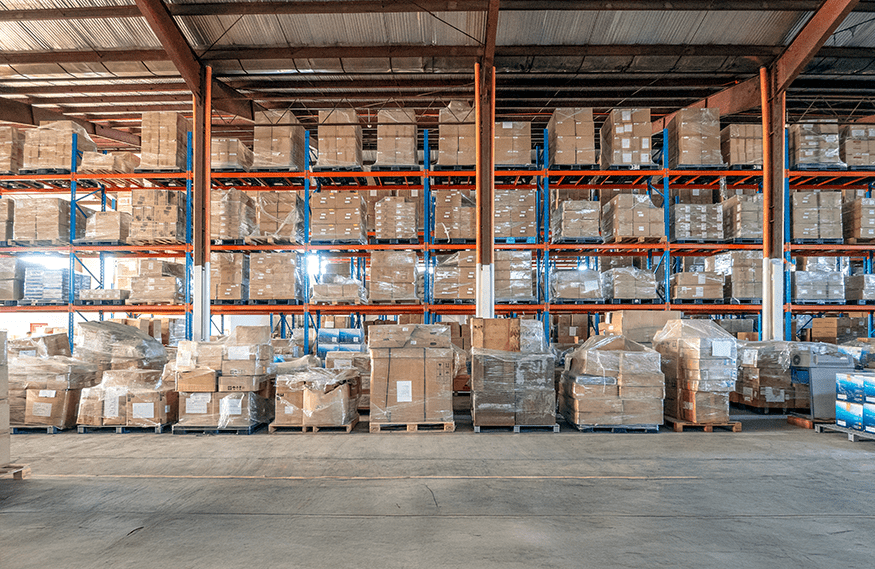Moving a Warehouse: Logistics and Inventory Management

Relocating a warehouse is a whole different challenge than moving an office or retail space. After years of managing large-scale commercial relocations, we know one thing is clear: warehouses require a higher level of planning and precision. They’re packed with inventory, lined with racks and shelving, and filled with equipment that keeps the supply chain moving. One misstep can create costly downtime, misplaced products, or broken customer promises. The good news is that with the right strategy—and the expertise that comes from experience—warehouse moves can be executed smoothly while keeping operations on track.
Why Planning Makes or Breaks the Move
In many ways, a warehouse is the heartbeat of a business. It’s where products are stored, organized, and shipped out. If something goes wrong during a relocation, the effects ripple through every part of your supply chain. That’s why a detailed plan is essential. Setting clear timelines, assigning responsibilities to team members, and creating backup operations can prevent headaches later. Some companies even arrange temporary storage or cross-docking to make sure orders keep flowing while the main facility is in transition.
Keeping Track of Inventory
One of the biggest risks in a warehouse move is losing track of inventory. The last thing you want is to discover that a pallet of high-demand products has gone missing. This is where strong labeling and tracking systems come in. Many businesses lean on barcodes or RFID tags so every product can be scanned before it leaves the old facility and again when it arrives at the new one. Grouping items into logical categories—by product type or by how often they ship—can also make the setup at the new space far less chaotic. And when you connect everything to inventory management software, your team knows exactly where each product is at every stage.
Moving the Big Stuff
It’s not just boxes that need to move. Warehouses are full of equipment that makes daily operations possible. Forklifts, pallet jacks, racking systems, conveyors, and sometimes even complex automation setups all have to be carefully dismantled, packed, and reassembled. Skipping steps here can cause serious delays. For example, racking hardware should be packed in a way that makes reassembly simple, and conveyors often need technicians to recalibrate them at the new facility. We recommend partnering with a relocation team that not only has the right tools and transport vehicles, but also experience in safely handling heavy industrial machinery and large-scale shelving systems.
Protecting the Supply Chain
The real challenge is making sure your supply chain doesn’t grind to a halt while you move. Many businesses take a phased approach, moving sections of inventory over time so the warehouse never goes completely offline. Others build up extra stock at alternate locations so customer orders can still be fulfilled. And of course, maintaining open lines of communication internally and with external partners strengthens coordination, making it easier to adapt if something unexpected happens.
Settling Into the New Space
When everything arrives at the new warehouse, the work isn’t over yet. This is the time to double-check inventory, test all the equipment, and make sure your IT systems are running smoothly. It’s also a great opportunity to optimize your warehouse layout. A move gives you the chance to rethink your workflow—whether it’s adjusting shelf placement, reconfiguring storage areas, or improving safety and efficiency in ways that weren’t possible in the old space.
How Olympia Can Help
At Olympia, we understand the complexity of warehouse relocations because we’ve managed them for businesses of all sizes. Our teams are trained not just in moving boxes, but in handling the heavy-duty equipment, racks, and systems that keep your warehouse running. We build detailed relocation plans, help establish labeling and inventory systems, and ensure your supply chain experiences as little disruption as possible.
With dedicated project managers, specialized equipment transport, and secure storage facilities, Olympia provides more than just muscle—we deliver the logistics expertise needed for a seamless transition. Whether you’re moving across town or across state lines, our goal is to get your warehouse up and running quickly so your business doesn’t skip a beat.
Need help moving a large warehouse facility? Contact Olympia today to learn how our team can help you relocate without disrupting your supply chain.
email: info@olympiamoving.com
phone: 800-222-4744
Works Cited
-
ASLMHC. “Guide to Warehouse Relocation Without Disrupting Operations.” ASLMHC Blog, 2024, aslmhc.com.
-
Cleo. “Supply Chain Continuity.” Cleo Blog, 2024, cleo.com.
-
ControlHub. “Inventory Buffer Strategies: How to Balance Stock and Supply Risks.” ControlHub Blog, 2025, controlhub.com.
-
Infor. “Supply Chain Redundancy | Mitigating Risks.” Infor Blog, 2024, infor.com.
-
MTG Transform. “How to Mitigate Supply Chain Risks in Factory Relocation.” MTG Transform Blog, 2023, mtg-transform.com.


